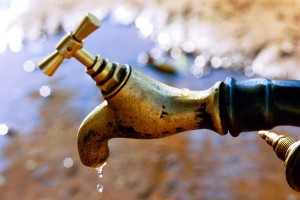New groundwater management and monitoring services tariff in Peru

As part of the ongoing institutional reform in Peruvian water resources management and, in particular, from the Legislative Decree #1185 (August 2015), the Empresas Prestadoras de Servicios de Saneamiento (EPS) (water utilities, responsible for providing drinking water and sanitation services), will now be in a position to implement and administer a new groundwater management and monitoring services tariff (GWMMT) for non-agricultural users with their own wells.
The 2030 WRG have supported SUNASS, the water services regulator, responsible for determining the tariff to be levied by water utilities, in developing the methodology for the design and implementation of the GWMMT.
Incentives for behavioral changes
Albeit initially conceived of as a cost-recovery instrument for water utilities to support their activities in managing and monitoring groundwater resources, the GWMMT, through establishing prices for groundwater-related services, also provides incentives for behavioural changes so as to move away from unsustainable patterns of groundwater withdrawal countrywide.
The tariff will be initially levied within 2016 by two water utilities: SEDAPAL, responsible for water services operation in Greater Lima, and SEDALIB, in Trujillo. The remainder of utilities will qualify for the implementation of the tariff within the next few months with technical support from SUNASS.
Opportunity costs
Provided institutional arrangements and complexities can be overcome – the 2030 WRG is also co-working with key stakeholders towards that aim –, especially the legal powers of SUNASS and the coexistence of SUNASS (as water services regulating entity) and the ANA (as the governmental body responsible for the regulation of water resources management, levying a water abstraction fee) then the GWMMT, as an incentive pricing mechanism, may convey information about opportunity costs of using groundwater, whilst inducing lower groundwater consumption.
Through internalizing the opportunity cost of groundwater and making non-agricultural groundwater users accountable for their water use, the incentive pricing features of the Peruvian GWMMT not only provide a means to reduce pressures on groundwater-dependent ecosystems (such as wetlands in the valleys of rivers Rímac and Chillón) but also help mitigate pressures over surface water resources, using groundwater as a buffer resource, especially in the Pacific watersheds (1.8% of surface runoff, more than 60% of the country’s population and 80% of national GDP).
Best practice
Although there are examples of groundwater tariffs in other countries, the Peruvian GWMMT can arguably be considered as quite unique because the way the tariff structure is designed, it links to ground water management plans which reflects a best practice that can be replicated in other countries.
By reducing excess demand, the GWMMT also reduces the need for further investment in grey infrastructure, something that may be especially relevant within the current macroeconomic context of economic downturn and fiscal consolidation. 2030 WRG is playing a key role both in supporting the water services regulator and also in creating the right incentives for sustainable water use, whilst promoting wide alliances to recognize that water is a limiting factor but also an opportunity for development in Peru.
